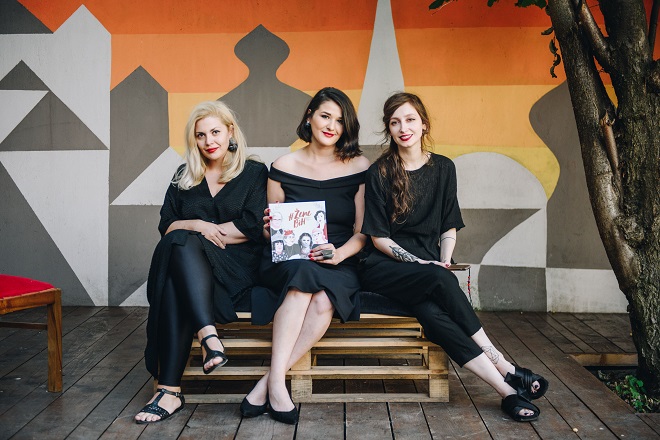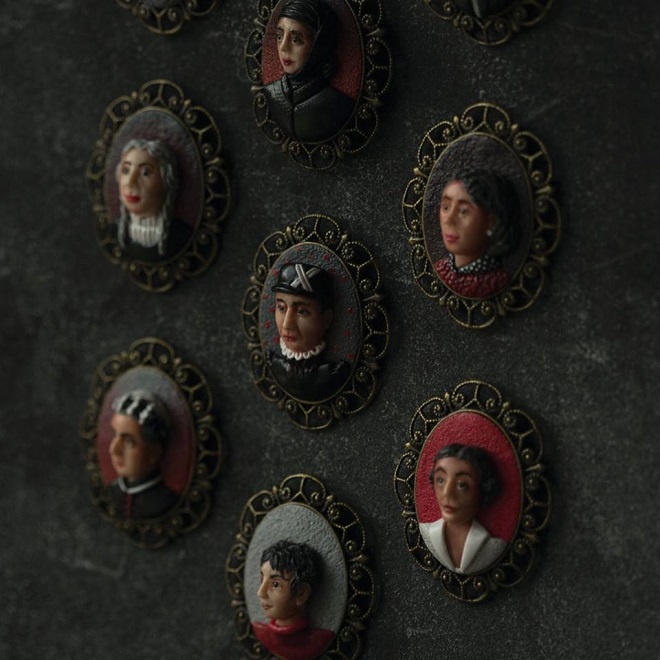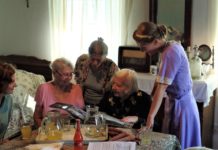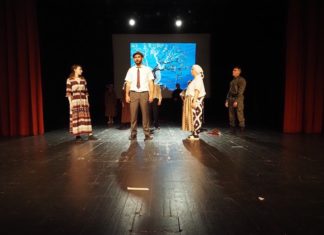An illustrated book about extraordinary women, entitled #ŽeneBiH (Women from Bosnia and Herzegovina), contains biographies of more than 50 women from Bosnia and Herzegovina who have pushed social boundaries, seemingly invisible, making history in their environment.
This is a book about the first female artists, writers, humanitarians, folk heroines, movie directors, scientists, musicians, doctors, activists, professors and other outstanding women from Bosnia and Herzegovina. We have launched this initiative in order to contribute to the visibility of women from Bosnia and Herzegovina but also to encourage similar educational initiatives. #ŽeneBiH book celebrates women who decided to educate themselves when women were not allowed to do so, who were (and still are) ambassadors of Bosnia and Herzegovina arts and culture in the world; who advocated for women’s rights at a time when they did not exist at all; who laid down their lives to fight fascism; who have achieved worldwide success in their fields of activity and were or are one of the greatest treasures that Bosnia and Herzegovina has, the authors state.
As I turn the pages of this book, I come across information that is not easily found on the Internet or in history textbooks. Staka Skenderova was a social worker, writer, and a teacher in Sarajevo. In October 1858, she opened the first girls’ school and, together with her friend Miss Irby, advocated for the education of women. Vesna Ljubić was the first woman in Bosnia and Herzegovina to direct the movie; Žarana Papić was a sociologist, anthropologist, professor and a pioneer of the Yugoslav feminist movement, Biserka Alikadić was the first writer to promote women’s literature in Bosnia and Herzegovina. As names of Bosnia and Herzegovina women follow I come across Fatima Mušić Manojlović, who was the first female pilot in Bosnia and Herzegovina, Bahrija Nuri Hadžić – a world-renowned opera singer from Sarajevo, Ševala Zildžić- Iblizović – the first Muslim doctor in Bosnia and Herzegovina, Vera Šnajder who was a mathematician, scientist and first female dean of the faculty in Bosnia and Herzegovina, but also Yugoslavia. The book also contains biographies of contemporary women like Amira Medunjanin, Šejla Kamerić, Zilka Spahić- Šiljak, Jasmila Žbanić and Selma Spahić.

There is not much information about these women on the Internet or in any other sources. When confronted with this problem after an initial survey in which we mapped some basic information about these women, we devised a research strategy that literally meant knocking on every door possible. In the end, our research looked exactly like that – we left no stone unturned, we dialled every possible phone number, went to all possible locations, contacted the women who are still alive, or their friends and family if they died, and we even went to cemeteries to check birth and death dates. This process actually took us most of the time and energy, since we had to check all the data as much as we could. We put a lot of effort into fact-checking, because being in such a difficult situation, with unsystematised data, and with so little data at the outset, we wanted to be sure that our data was accurate. As far as we know – they are accurate, but we are always open to updating and correcting them, if anyone has different information, says Masha Durkalić, one of the authors of the project, adding that searching for data was the most challenging part of the research process.
We expected this to be a major challenge, given the absence of women from Bosnia and Herzegovina historiography, but we did not expect the scarcity of information to be so striking and that the data would be as poorly systematised as it was inadequately verified. Here we proved to ourselves that women’s history is still invisible today, because we cannot reach it as easily as we can reach men’s history. This is something that we, as a society, must change, and be aware that the history created (and still being created) by women must be equally recognised and recorded.
When it comes to the criteria that the authors used to select women to represent in the book, Masha Durkalić points out that their approach was based on the pioneering position of those women in society.
The women in the book are mostly pioneers in their fields of activity. So, they are the first female artists, directors, actresses, teachers, social workers, scientists… It was also important for us to give a prominent position to women who fought in World War II, female partisans who shoulder to shoulder with their male comrades assaulted against fascism and in the process lost their lives. Finally, we have included contemporary women in the book, who are building our new history today, writing new pages, and changing their patriarchal perceptions of society, fighting against that patriarchy, and for gender equality. We always note that the selection of women in the book is subjective and very personal – those are the women who inspired us, and we felt we should honour them by publishing this book. There are many more women who deserve to be a part of this book, and we hope to have the opportunity to honour them in the future as well.

On the occasion of International Women’s Day, organisations around the world are preparing various programs marking it throughout the month of March. Recently a public call has been initiated to collect data on streets named after women in the European Union Member States, and I was curious how many streets, squares, schools and hospitals were named after women from Bosnia and Herzegovina.
There is no accurate and systematic information on this, and that was also one of the challenges we faced. Research into how many public spaces in Bosnia and Herzegovina were named after women would require a separate project, as it is a very demanding endeavour, since numerous streets and other public spaces have been renamed according to political circumstances in relation to the historical period. When it comes to women from our book, we were able to find information on where the rare streets named after them are located in Bosnia and Herzegovina. What we know about the Canton of Sarajevo, since one of us has been researching this information, is that out of over 1,300 streets, only 18 of them are named after women. This fact is truly devastating and it is absolutely essential to change this situation by naming more streets after women who deserve it as much as men.
In the end, the author states that during the research they came upon no data on Rroma women who in the past made a breakthrough in their minority communities, but also in society as a whole, therefore could not be included in the project because of its limitations.
We have faced numerous limitations while working on this book, and one of them was the lack of adequate resources to devote time to all the extremely important aspects of women’s contributions. Among these certainly are past and present Rroma women contributions. Hedina Tahirović- Sijerčić is one of those pioneers, we were previously introduced to her work and found it inspiring. The Rroma community in Bosnia and Herzegovina remains marginalised and Rroma women are twice discriminated against. We hope to have the opportunity to learn more about different things, among them certainly are the contributions of Rroma women. Therefore, we always invite people to share with us interesting information about women from their communities, irrespective of the type of the community.












